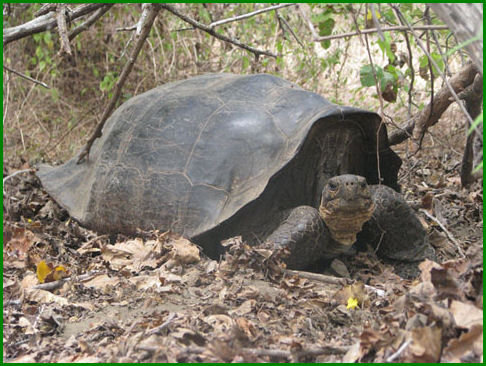09 January 2012
GALAPAGOS CONSERVANCY
WASHINGTON, DC
Through a combination of cutting edge genetic research and time-tested field work, scientists have determined that a Galapagos Giant Tortoise species long thought to be extinct in the wild may still be living on the northern end of the island of Isabela, a few hundred kilometers from Floreana, their island of origin.
This week a team of scientists from a number of institutions led by researchers in the Ecology and Evolutionary Biology Department at Yale University are reporting new evidence that pure Floreana tortoises (Chelonoidis elephantopus) may still exist on Wolf Volcano on the north end of the island of Isabela.
These results, funded in part by Galapagos Conservancy, provide great hope for recovery of this species, thought to be extinct for nearly 150 years. Having previously found a small number of hybrid tortoises on Wolf Volcano, scientists returned in December 2008 to obtain blood samples from a total of 1669 individuals, approximately 20% of the estimated current tortoise population.
Results reported this week indicate that 84 tortoises were found whose DNA show that they resulted from hybridization events involving a pure Floreana tortoise as one of their immediate parents. Thirty of the 84 tortoises were determined to be less than 15 years old – indicating that the likelihood of pure Floreana tortoises still roaming the slopes of Wolf Volcano is quite high. Historical records indicate that tortoises were often moved between islands by whalers and other visitors to Galapagos in the 18th and 19th centuries, and many ended up on Wolf Volcano. These historical records provide an explanation for the unusually wide range of tortoise types found there — a population mix that would not be expected to occur naturally.
“Galapagos tortoise populations have benefited from a long and successful history of captive breeding and repatriation,” reports Galapagos Conservancy’s Science Advisor Dr. Linda Cayot, whose work as head of herpetology at the Charles Darwin Foundation in Galapagos spanned more than a decade. “With these data in hand, the Galapagos National Park will be able to embark on a rescue mission for the Floreana Giant Tortoise species. We are extremely grateful to all the institutions who have worked together to bring us to this exciting moment.”
These findings come just as the Galapagos National Park, the Charles Darwin Foundation, and others are in the initial years of Project Floreana – aimed at restoring that island to a more pristine condition and ensuring a sustainable community for its human inhabitants. Says Dr. Cayot, “Returning true Floreana tortoises as part of that effort is now a dream that could come true.”
If interested, check out this additional information on tortoise repatriation and Project Floreana:
Brief History or Tortoise Repatriation in Galapagos
Project Floreana: A Plan for Island Restoration in Galapagos
Project Floreana: A Plan for Island Restoration in Galapagos


Geen opmerkingen:
Een reactie posten